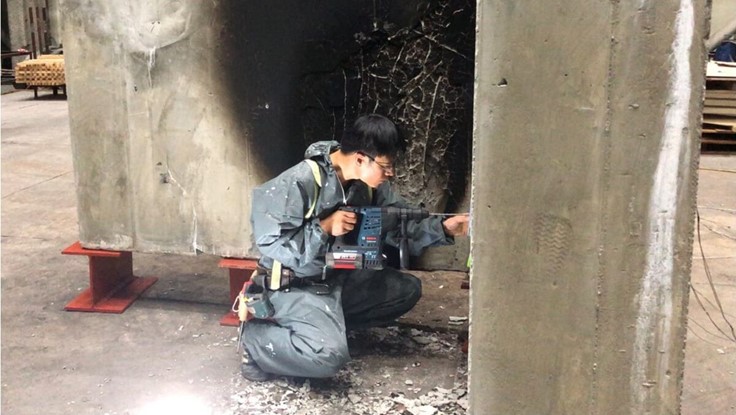No widely-accepted technique that can precisely evaluate the level of fire damage to a concrete structure exists perhaps until now with a forensic tool developed by construction engineers in South Korea.
Various techniques have been studied such as visual observation, compression test, UV spectrum, and oxygen measurement, however, none can accurately diagnose if a fire-damaged structure should be replaced or repaired. This is the view of Dr Youngsun Heo from the Department of Fire Safety Research at The Korea Institute of Civil Engineering and Building Technology (KICT) who refers to a new tool his team developed as a world-first.
“When concrete is exposed to fire, the hydration products in the cement matrix are chemically decomposed. It leads to cracks, dramatic deterioration of strength and even end of its service life as a structure,” he said.
“After fire exposure, service life of concrete structure can drop within two weeks, depending on the damage level. The higher the volume of pores in concrete arising from fire, the faster is the dramatic reduction of life expectancy. If the structure is not going to be rebuilt, immediate diagnosis and subsequent repairing work should be proceeded even when there is minor damage.”
Consequently, the KICT team developed the F2IS (fire forensic investigation of structure) tool. Taking samples of 1-2g at every 10 mm depth of fire-damaged concrete can produce valuable outputs, according to Dr Youngsun.
“F2IS could successfully predict the fire-damaged temperature with over 80% accuracy, and time-temperature curves at the surface of concrete. They can reproduce thermal diffusivity by adopting a three-dimensional simulation technique”.
Dr Youngsun revealed that using the forensic fire investigative tool, a series of protocols involving practical sampling design (PSD); experimental design (ED) for selecting appropriate chemical devices for analysing specific samples; chemical profiling algorithm (CPA) for singling out key features from chemical results; and a deep learning interface algorithm (DIA) for comparing CPA results and standard data pre-stored in a large data platform. It takes less than two weeks to complete and results in high accuracy, the KICT team said.
MORE INFORMATION:
Watch a video of the fire-damaged concrete study. Image source: KICT


